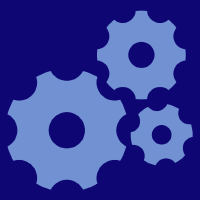Topic Menu
► Topic MenuTopic Editors




Artificial Intelligence in Smart Industrial Diagnostics and Manufacturing, 2nd Volume
Topic Information
Dear Colleagues,
In the field of industrial production, metal parts and components have complex production processes that require machining, stamping, precision casting, powder metallurgy, injection molding, and other special synthesis procedures. Each process needs to be strictly controlled to ensure product quality. The application of metal parts covers almost all industries in life and is closely related to our lives. There are many types and sizes of parts, and the processes of surface inspection, size measurement, target positioning, etc., are difficult and have low accuracy. Different production requirements make it impossible for manual inspections to meet actual production needs. In order to solve the visual problems in industrial production, intelligent detection based on artificial intelligence (AI) can learn and recognize information such as surface defects, dimensions, and the positions of metal parts. As opposed to traditional vision algorithms, optimized algorithms can effectively solve the problems of high reflection and high brightness in the image acquisition process. These have rapid recognition speed, high accuracy, and strong versatility and can solve problems in the production processes of various metal parts. Research in this field is dedicated to the development of smart industrial diagnostics and manufacturing based on AI (SIDM-AI) and is the product of a combination of vision processing technology and AI technology. AI is a novel technological science that entails the study and development of theories, methods, technologies, and application systems used to simulate, extend, and expand human intelligence. AI is a branch of computer science that attempts to understand the essence of intelligence and to produce new, intelligent machines that can react at a similar level to human intellect. Research in this field includes robotics, language recognition, image recognition, natural language processing, expert systems, etc. Since the inception of AI, their theories and technologies have become increasingly mature, and the fields of application have continued to expand. It is conceivable that the technological products developed with AI in the future will be the "containers" of human wisdom. AI can simulate information processing similar to human consciousness and thinking. Although AI is not human intelligence, it can think like humans and may soon exceed the capacity of human intelligence. Research in this field focuses on industrial quality inspection links such as surface inspection, assembly inspection, precision measurement, and workpiece positioning. Compared with traditional inspection solutions, novel inspection systems have low costs, high efficiency, and high accuracy and could replace most of the low-end manual labor in the current manufacturing industry and reduce labor costs. The development of SIDM-AI contributed to the further development of industries such as automobile manufacturing, building material production, 3C manufacturing, and textiles. With the continuous development of AI technology, it is expected to help companies reduce production costs, improve production efficiency and benefits, and accelerate the upgrading of intelligent industries. The aim of this Topic is to present an overview of the current state of the art of smart industrial diagnostics and analysis based on combinations of AI techniques such as visual detection, computer vision technology, and smart diagnostics and analysis.
Suggested topics include but are not limited to the following:
- Smart image identification based on computer vision technology;
- Intelligent detection based on machine learning;
- Visual classification based on machine learning;
- Smart detection of images based on AI;
- Segmentation tasks of images based on AI;
- Fusion of images based on AI;
- Smart industrial analysis based on machine learning;
- Smart industrial diagnostics based on machine learning.
Prof. Dr. Kelvin Wong
Prof. Dr. Andrew W.H. Ip
Prof. Dr. Dhanjoo N. Ghista
Prof. Dr. Wenjun (Chris) Zhang
Topic Editors
Keywords
- artificial intelligence
- machine learning
- industrial diagnostics
- big data analysis
- image processing
- virtual reality
- deep learning
- image segmentation
- optimized algorithms
- image acquisition
- intelligent machines
- machine language
- precision measurements
Participating Journals
| Journal Name | Impact Factor | CiteScore | Launched Year | First Decision (median) | APC |
|---|---|---|---|---|---|

Applied Sciences
|
2.5 | 5.3 | 2011 | 18.4 Days | CHF 2400 |

Journal of Manufacturing and Materials Processing
|
3.3 | 5.1 | 2017 | 16.5 Days | CHF 1800 |

Machines
|
2.1 | 3.0 | 2013 | 15.5 Days | CHF 2400 |

Processes
|
2.8 | 5.1 | 2013 | 14.9 Days | CHF 2400 |

Sensors
|
3.4 | 7.3 | 2001 | 18.6 Days | CHF 2600 |

Technologies
|
4.2 | 6.7 | 2013 | 21.1 Days | CHF 1600 |

Preprints.org is a multidisciplinary platform offering a preprint service designed to facilitate the early sharing of your research. It supports and empowers your research journey from the very beginning.
MDPI Topics is collaborating with Preprints.org and has established a direct connection between MDPI journals and the platform. Authors are encouraged to take advantage of this opportunity by posting their preprints at Preprints.org prior to publication:
- Share your research immediately: disseminate your ideas prior to publication and establish priority for your work.
- Safeguard your intellectual contribution: Protect your ideas with a time-stamped preprint that serves as proof of your research timeline.
- Boost visibility and impact: Increase the reach and influence of your research by making it accessible to a global audience.
- Gain early feedback: Receive valuable input and insights from peers before submitting to a journal.
- Ensure broad indexing: Web of Science (Preprint Citation Index), Google Scholar, Crossref, SHARE, PrePubMed, Scilit and Europe PMC.

